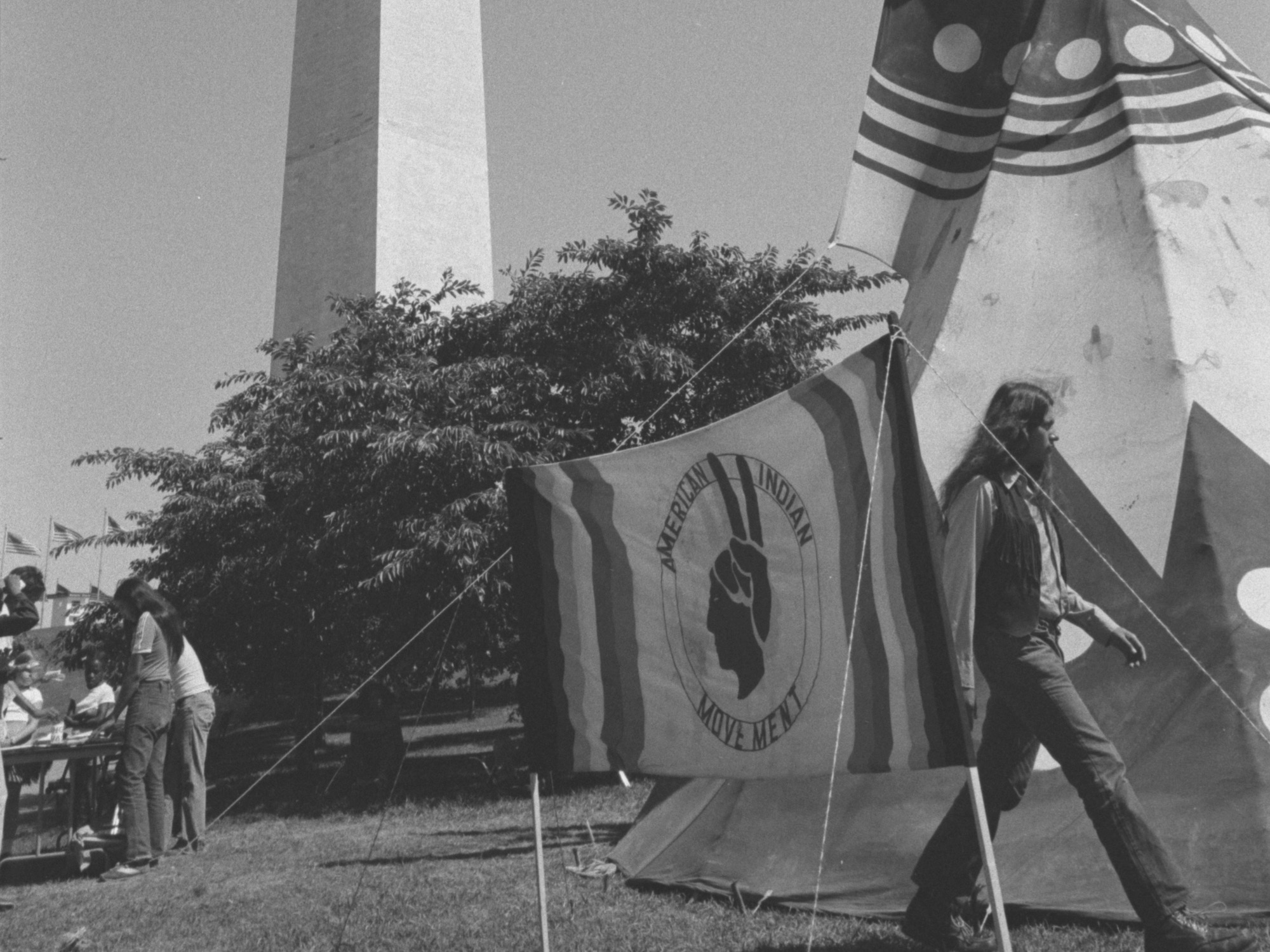Notes from Indian Country
Moving forward in a non-violent wayBy Tim Giago (Nanwica Kciji – Stands Up For Them) Several leaders of the American Indian Movement have made their journey to the Spirit World. Vernon Bellecourt, Russell Means, John Trudell, and last week – Dennis Banks. Clyde Bellecourt is one of the last still standing. Oftentimes some of the younger generation, having read so many books and articles glamorizing the life and times of the American Indian Movement, are only privy to those things that are of a positive nature. Thus many of the more negative actions of AIM, as in all movements, are overlooked or are not known. Here are a few things to consider. On the night of Feb. 3, 1973, Jim Czywczynski, the new owner of the Wounded Knee Trading Post, took his family to a basketball game at Kyle to watch the Little Wound Mustangs play. On the way home to Wounded Knee they were stopped by a roadblock set up by the Bureau of Indian Affairs police. They were told that armed men had invaded the village and had taken several people hostage. Two of the people taken hostage were Clive and Agnes Gildersleeve, the founders of the Trading Post. Agnes was an enrolled Ojibwe. Although in their 80s, both were terrorized, blindfolded and tied to chairs. In the 1920s the Gildersleeve family built a store at Wounded Knee that sold canned goods, a butcher shop that cut meat fresh daily, bread and milk was sold there and there were gas pumps out in front to enable the Indian people to fill up their cars. Their store also housed a U. S. Post Office and benches on the front porch for the Lakota elders to sit, smoke and visit. The elders smoked and spoke softly about what happened at Wounded Knee in December of 1890, just 30 years ago. They pointed at the hills above the Trading Post as they talked. And it was indeed a trading post. Renowned Lakota artists like Hobart Keith, Andrew Standing Soldier, Jake Herman, Vincent Hunts Horse, Paha Ska, Richard “Codger” Red Owl, and Felix Walker brought their paintings to the store and sold them on consignment. Walker is the artist who painted the pillars and spirals in the old Holy Rosary Mission Church at Pine Ridge. His full Lakota name was Felix Walks Under the Ground and Comes Up Holy Two Sticks. In later years Agnes Afraid of Hawk and her daughter Belva worked at the store creating intricate beadwork which they in turn sold at the store. Joe Spotted Horse, Howard Wounded Horse, and Patricia Pumpkin Seed also worked in and around the store as did my father Tim Giago, Sr. An article announcing the death of Dennis Banks in the Minneapolis Star Tribune referred to the 1973 “uprising” at Wounded Knee. Uprising? The peaceful people living and working at Wounded Knee did not rise against themselves, loot their own businesses and homes, and eventually burn their village to the ground. The people responsible for this were outsiders, not residents. The takeover at Wounded Knee followed the November, 1972 takeover of the Bureau of Indian Affairs Headquarters in Washington, D. C. In the DC takeover thousands of irreplaceable records important to Indian families across America were strewn about the buildings and many destroyed forever thus creating untold hardships to those families needing access to those records. As the AIM occupiers were leaving Wounded Knee their caravan of cars were stopped and searched by U. S. Marshalls. Nearly 40 pieces of priceless works of art were recovered from the occupiers as they tried to squirrel them away in their vehicles as they abandoned Wounded Knee. Ray Robinson, a black activist, entered Wounded Knee during the siege and he has never been seen again. A couple of years later Anna Mae Pictou Aquash, who had a romantic affair with Dennis Banks, was taken hostage in Denver, driven to the outskirts of Wanblee on the Pine Ridge Reservation, raped and murdered by two members of the American Indian Movement. Both AIM members are now serving life sentences for her murder. Theda Clark, an Oglala Lakota, was fingered as the ringleader in her abduction. Aquash had been accused of being an informer for the FBI by AIM leaders. As I wrote many years ago if AIM had followed the example of Martin Luther King, Jr. and Mahatma Gandhi and protested peacefully and without violence, they would have had the entire Indian nation behind them. But when they resorted to acts of violence they lost many of their would-be followers. In the end many AIM leaders like Vernon Bellecourt became my friends and in their own way all of them tried to do what they thought was best for Indian Country. As Vernon said, “Tim, we’re working for the same cause, we’re just coming from different directions.” My reply, “Then quit firebombing my newspaper.” There is still a lot of injustice in Indian Country and the American Indian Movement can still be a leader in the fight for justice. We are too few in numbers and not politically relevant enough to believe that we can bring about positive change through violent means. But I advise you younger folks to learn the true history of AIM. There was a lot of good, but there was also a lot of bad that came out of the movement. Knowing which to follow and which to believe is now extremely important. As history has taught us; violence begets violence! Gandhi and King changed history through peaceful means and we should follow suit. May the spirit of Dennis Banks find peace. Contact Tim Giago at najournalist1@gmail.com
Join the Conversation

